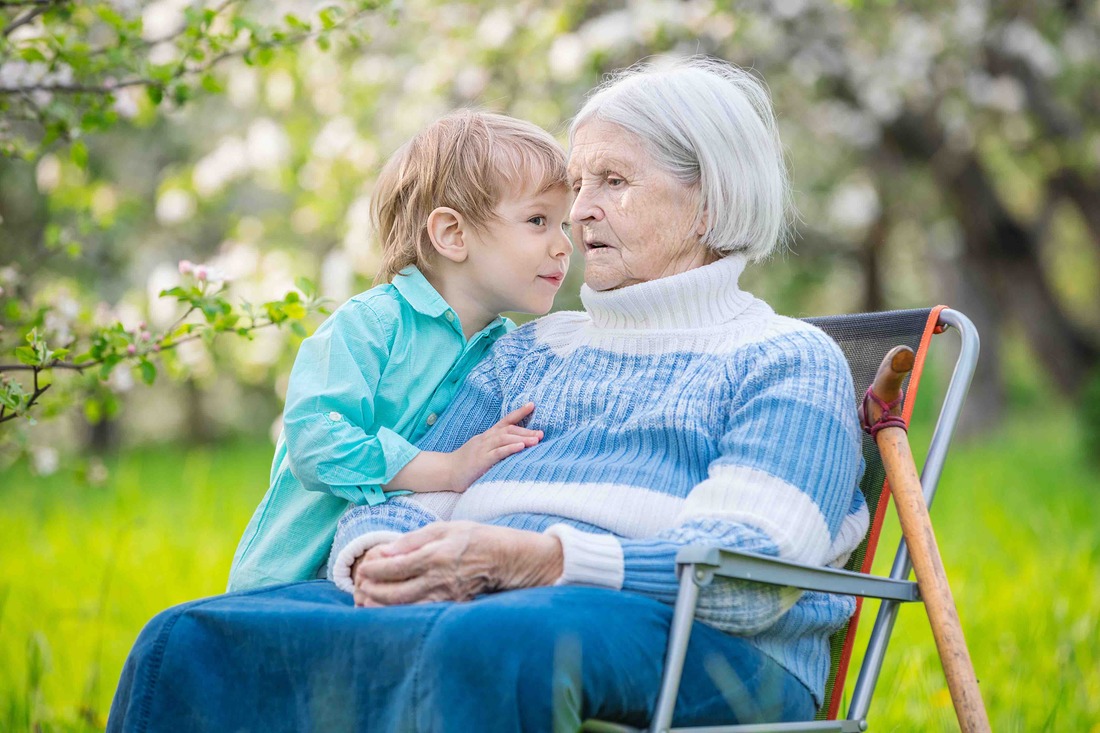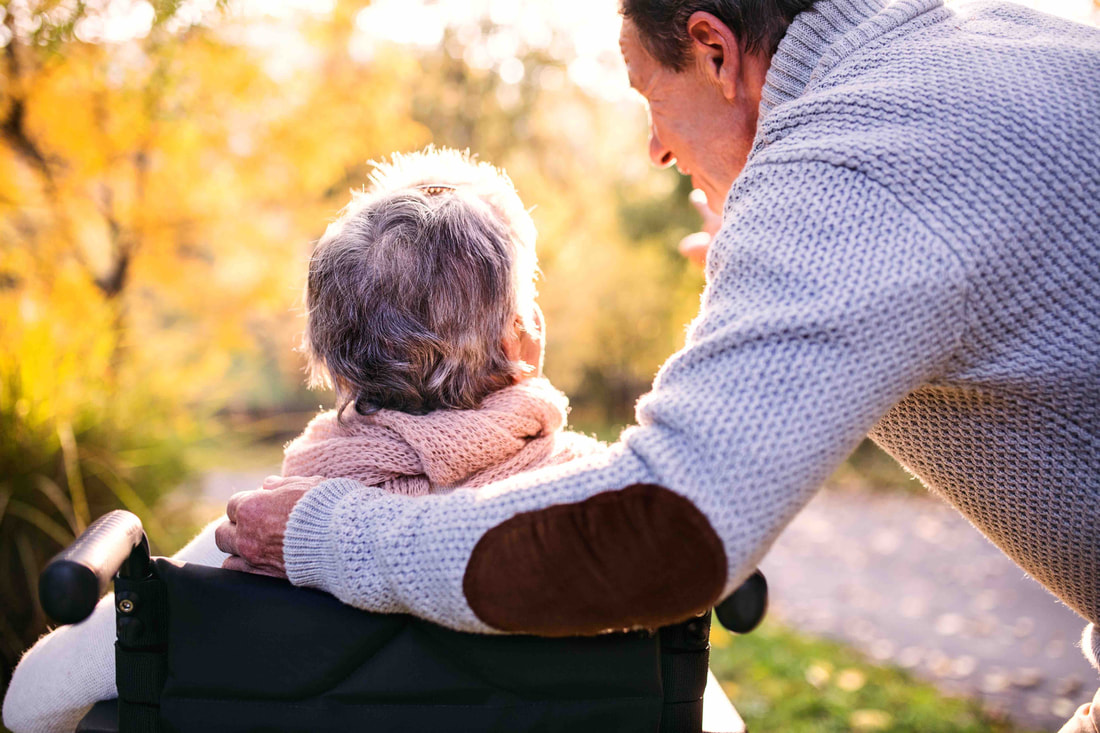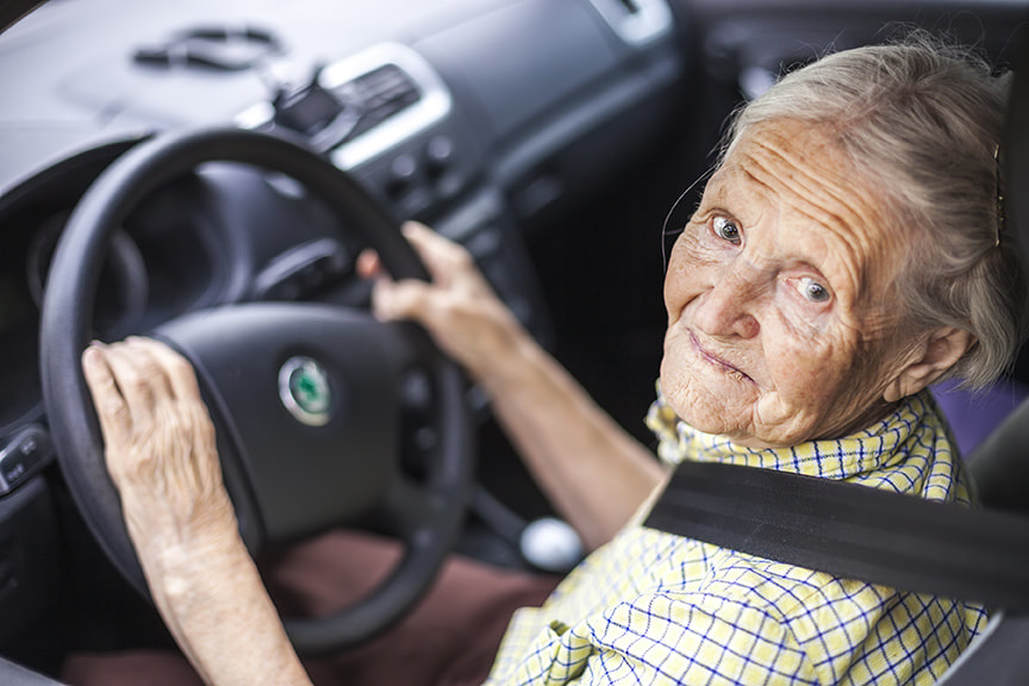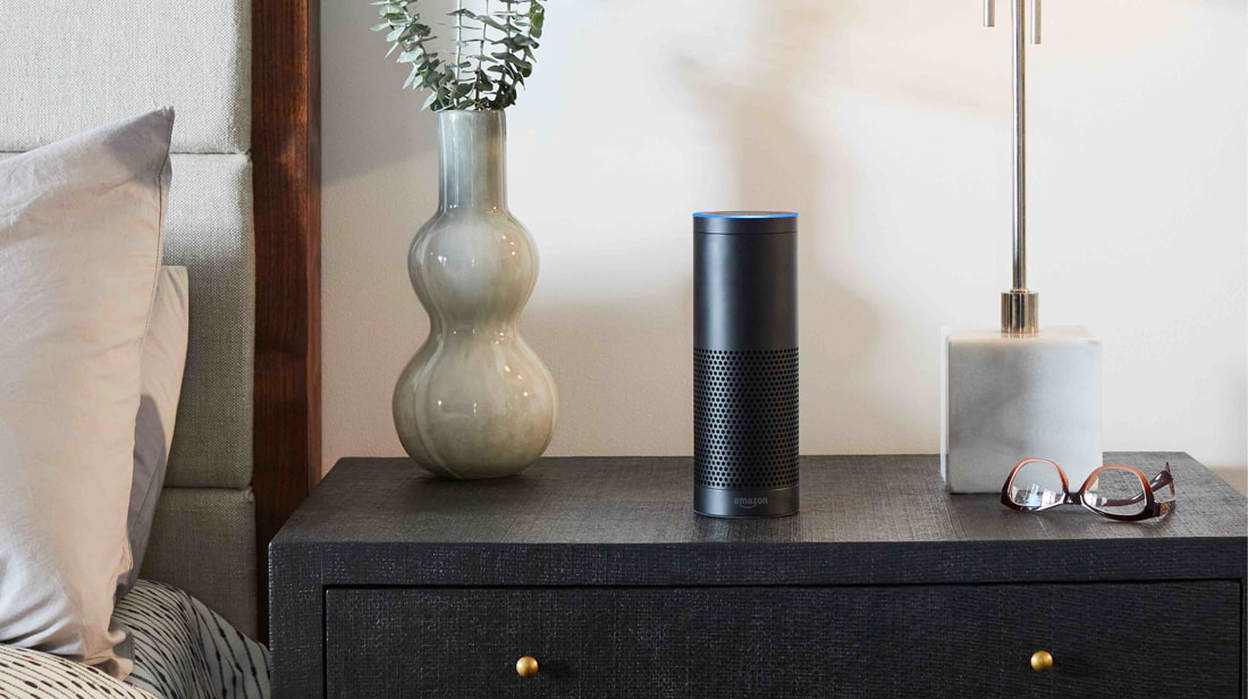|
I started paying attention to statistics and studies on elder care more than five years ago, when my mother was showing signs of dementia and no longer was able to manage life at her condominium in Highlands.
The numbers were scary then. They’re even scarier now. An excellent article in the Wall Street Journal highlights the plight of “sandwich-generation” caregivers: men and women -- mostly women -- who simultaneously are caring for young children and elderly parents who no longer can perform “activities of daily living” such as preparing meals and bathing. The number of Americans shouldering such a burden has swollen to 9 million, according to the Journal. The article points to a number of demographic trends that help explain how we got here. Women are having children later in life. People are living longer, and more are developing Alzheimer’s disease and other forms of dementia. Families are smaller, increasing the burden on the “sandwich generation.” “All these trends are converging and intensifying the demands on those caring for generations on either side of them,” Journal reporter Clare Ansberry writes. A recent study by the National Alliance for Caregiving found most such caregivers are in their 30’s, 40’s and 50’s -- at the peaks of their careers both as professionals and parents. They devote an average of 22 hours a week to caring for an elderly parent, even as they work an average of 36 hours a week, not to mention the time spent raising their children. “It’s not hard to see how we are being squeezed and stretched like never before,” said Sarita Gupta, co-founder of the support group Caring Across Generations. And it’s only going to get worse. Consider that the first baby boomers will turn 80 in 2026. Consider, too, that about 60% of Americans 65 and older have at least two chronic health conditions, according to the Centers for Disease Control and Prevention. “Old age is very different today than it was 15 or 20 years ago,” said Anne Tumlinson, who started the support group Daughterhood.org. “Medical intervention keeps people alive long past the point when they can take care of themselves.” The Journal article profiles a number of women and men who are simultaneously raising children and caring for elderly parents -- cases that painfully illustrate the predicament so many of us are in. One example is Deanna Bautti, a 37-year-old small-business owner who drives to her father’s apartment twice a day to make sure he is fed and dressed. Because her toddler Roman accompanies her, Ms. Bautti tries to time the visits around his naps and meal times. “I feel very torn between my child and my dad,” she told the Journal. According to the article, one in three “sandwich caregivers” live in the same home with the parent who needs help. While that may be true nationally, the number is probably far smaller in wealthier areas such as Monmouth County, where many residents commute to high-pressure jobs in and around New York City. In many ways, the pressures on caregivers can be even greater under those circumstances. The Journal piece also powerfully illustrates the boundless love people bring to juggling their responsibilities as parents, professionals and adult children of an ailing mother or father. “My mom was mentally ill and dependent on me the entire time I was bringing up my three kids,” one “sandwich-generation” caregiver said. “I didn’t realize this until years later, but the life-affirming and loving messages my kids got from watching my husband and me care for someone taught them the really big lessons in life -- like the meaning of love. We all learned and grew from the experience.” If you’re a “sandwich caregiver,” the Journal offers some useful advice. Among the most important points: 1. Set boundaries: Be clear about what you can and can’t do and say no when you have to. 2. Prioritize: Drop non-essentials from the list and make sure the essentials really are that. 3. Enlist help: Ask relatives, friends and neighbors for help. Family members who can’t help with primary care can research support options and help manage finances or pay for housekeeping. 4. Plan: Caregiving can stretch into decades. Look into respite care, adult day care and in-home care. If you want to explore home-care options, Twin Lights Home Care is here to help. Written by T.J. Foderaro
1 Comment
There were times when I was caring for my mother in the final years of her life that I thought I was going to lose my mind. Many times. And quite literally. Although we employed part-time aides to look after my mom at her condominium in Highlands, I was constantly dealing with calls from the building manager, grocery shopping, doctors’ appointments, prescription pick-ups, bills and taxes. As my mother grew frailer in body and mind, there were phone calls at all hours of the day and night. Her door was wide open. She tried to walk out of the building. She was confused. She had fallen. There were days when I felt like I couldn’t go on anymore, had no idea how I’d continue juggling the responsibilities of helping my 82-year-old mother while meeting my obligations at work (two jobs) and home (three children). There were moments when the stress literally made me feel nauseous. I also felt angry, sad, frustrated, guilty. It didn’t occur to me at the time that other people — millions of them — were going through the same thing. “It’s hard,” said Linda Schulman, a New Jersey resident who first cared for her dying husband and then for her elderly mother. “It’s like having a second full-time job. It’s very time-consuming.” Schulman’s testimony is all the more telling because she’s a professional. Her title is director of community relations at Daughters of Israel, a nursing home and rehabilitation facility in West Orange. “It is my day and night,” Schulman said of her work in the nursing home. “I lived it. I breathed it. And then it became my life.” Schulman is among a number of New Jerseyans featured in a lengthy expose that recently appeared in the Asbury Park Press. The series, titled “‘Consuming and Isolating’: Why the Caregiver Crisis Could Strain Public Health Care,” reveals that 1.7 million people in New Jersey — nearly 20% of the men, women and children in the state — “live the life of an unreimbursed caregiver.” “Every day, compassionate Americans devote time, energy and resources to ensure that family members who are disabled, elderly, chronically ill or injured can remain in the stability and comfort of familiar surroundings,” reporter Cheryl Makin wrote. “ These Americans are caregivers -- a growing group who often sacrifice much in their own lives for their loved ones.” Are you a caregiver? If you devote some of your time each week to caring for a spouse, parent or other family member who needs help with “activities of daily living” and/or medical treatment, then you qualify as a caregiver. While there are professional caregivers who get paid for their work, most are family members who are unpaid. A recent study by the United Way found the vast majority of caregivers (86%) are women, mostly between the ages of 50 and 64. Nearly half provide care for a parent. Unlike professionals who work regular schedules, unpaid caregivers can be on call 24/7. Numerous studies show that such responsibility can take a serious toll, both mentally and physically. The United Way study, for example, found caregivers often neglect “their own mental and physical health ailments as they put themselves last in their desire to care for another. Caregivers may feel stress, grief and other difficult emotions while providing care.” It’s no wonder that nearly 20% of caregivers exhibit signs of moderate to severe depression, versus less than 7% of the overall population, according to the United Way. Lucille Deutsch, who runs a geriatric-care agency in Morris County, said many family caregivers “end up more ill than the person they are caring for. They don’t keep their doctors’ appointments, they are not eating right, they are not getting enough sleep, they don’t exercise because they are so focused on caring for this person that they love.” In many cases, family members don’t even realize they’re filling the role of a caregiver, Deutsch added. “I’ve met so many sons and daughters over the years who say, ‘No, I’m not a caregiver, I just go food shopping for my mom and do her laundry or I’ll run to the bank,’” she said. “Those are caregiving activities.” In retrospect, I never thought of myself as a caregiver either. As my mother’s condition worsened, we felt it necessary to hire a live-in aide through an agency. We went through a half-dozen aides before we found someone who was right for my mother. But even then I was often on duty, from stocking my mother’s refrigerator to managing her finances to relieving the aide when she went to church on Sundays. I guess I was a caregiver after all. What can caregivers do to manage the stresses and strains of their “second job”? The Family Caregiver Alliance offers the following tips: 1. Recognize warning signs early. These might include irritability, sleep problems and forgetfulness. Know your own warning signs, and act to make changes. Donʼt wait until you are overwhelmed. 2. Identify sources of stress. Ask yourself, “What is causing stress for me?” Sources of stress might be that you have too much to do, family disagreements, feelings of inadequacy or the inability to say no. 3. Identify what you can and cannot change. Remember, we can only change ourselves; we cannot change another person. Ask yourself, “What do I have some control over? What can I change?” 4. Take action. Taking some action to reduce stress gives us back a sense of control. Stress reducers can be simple activities like walking and other forms of exercise, gardening, meditation and having coffee with a friend. Identify some stress reducers that work for you. 5. Take a break from caregiving. Get help with caregiving tasks either by recruiting other family members or hiring a professional caregiver. Written by T.J. Foderaro Managing care for an elderly parent can be emotionally draining and logistically exasperating under the best of circumstances. I consider myself lucky because my mother, in her final years, was generally appreciative of the care my sister and I provided either directly or with the help of a series of home-care aides. She had her moments, but for the most part, my mom gladly accepted help. Unfortunately, that’s not always the case with older people grappling with deteriorating health or mental function. Consider the case of Ed, whose health and cognitive abilities went into sharp decline after his wife died. His stepdaughter Jan jumped into the fray, quitting her job to help take care of her father, who suffered from diabetes. “When his blood sugar spiked to a dangerous degree, Ed refused to go to the hospital,” writes Jody Gastfriend in a newly published book, “My Parent’s Keeper: The Guilt, Guesswork and Unexpected Gifts of Caregiving” (Yale University Press). “Jan, upset and alarmed, pleaded with her stepfather and eventually called 911 against his wishes.” Soon, Ed had to have two toes amputated. Then a leg. “Although Ed was able to put on his own prosthetic, he refused to do so and was confined to a wheelchair,” Gastfriend reports. Compounding the challenges for Jan: “Ed would not agree to an outdoor ramp, making movement in and out of the house a Herculean task. He was stuck -- physically and emotionally. And so was Jan.” Gastfriend has accumulated a wealth of knowledge about caring for the elderly based on both her personal and professional experience. She has been a social worker for more than 30 years and currently is vice president for senior care at Care.com, the leading online marketplace for home-care services. In “My Parent’s Keeper,” Gastfriend examines all aspects of caring for an elderly parent, from dealing with difficult siblings to hiring professional caregivers to managing the financial burden. But she’s particularly insightful when it comes to dealing with the parents themselves – especially those who refuse to acknowledge they might need help after a lifetime of helping others. (If you want a sample, Forbes just published an excerpt of the relevant chapters.) “One of the biggest frustrations for adult children is that they come up with a plan that makes perfect sense to them but their parent says, ‘Thanks but no thanks,’” Gastfriend writes. “When our parents’ refusal to accept help puts their safety and well-being in jeopardy, we feel compelled to act, yet our good intentions are often thwarted. I have heard countless stories of caregivers who tried strong-arming their parent to accept help – only to feel angry and dismayed when their efforts failed.” Gastfriend has two simple but wise pieces of advice if you have a parent who clearly needs help but refuses to accept the fact. First, try not to take their rejection personally. It’s not you they’re rejecting, but the notion that they may not be as capable and independent as they once were. And second, try to empathize with their fears and insecurities. Literally, try to imagine being in their place and how you might react under similar circumstances. The exercise can help turn an adversarial process into a partnership. “Offering choices and ceding a little control along the way may help break down the walls of resistance,” Gastfriend observes. Sometimes all it takes is a change of terminology. Gastfriend cites the example of one family who initially had trouble persuading their father to accept help from a professional caregiver. The father, you see, was a retired corporate CEO who was not accustomed to relinquishing control. Wisely, his children stopped using the term “caregiver” and started saying “assistant” instead. That was enough to satisfy their father. If, despite your best efforts, a parent refuses to budge, you may need to seek help from a professional, Gastfriend advises. “Aging life-care professionals, elder-law attorneys and professional mediators can provide an objective perspective about financial and legal matters and lay out options for care. They may also dislodge entrenched parents from unreasonable and unsustainable positions that put them and others at risk.” In an appendix to “My Parent’s Keeper,” Gastfriend distills her experience and insights into three useful tips:
Written by T.J. Foderaro
One of the uglier conversations I ever had with my mother was over concerns my sister and I had about her driving abilities -- or lack thereof -- as she approached her 80th birthday. Until she was 75, my mother commuted several times a week between her home in Highlands and her job as a journalism teacher at Fairleigh Dickinson University in Teaneck -- a long, difficult commute she often managed at night and in all kinds of weather. But when she began exhibiting what we later realized were the early signs of dementia, she started to lose her confidence behind the wheel. My mother admitted that she sometimes felt lost when driving -- even close to home in areas she was familiar with. She increasingly asked me to drive her places rather than drive herself. She clearly was having difficulty staying focused on the road. But when my sister and I suggested my mother stop driving, you’d think we had asked her to stop breathing! “What am I going to do without a car?” she said again and again. Not long after, my sister and I quietly gave my mother’s Subaru Forester to my sister’s daughter, who had just started driving. For months afterward, my mother would ask repeatedly, “Do you know where my car is?” In retrospect, my sister and I could have handled the situation a lot better. What I didn’t know then is that a great deal of research and advice are available to help evaluate the driving skills of elderly people and then sensitively discuss the issue with them. “Because driving is closely tied to freedom and independence, acknowledging the possibility of one day being unable to drive is difficult for almost anybody,” according to AAA. “This is why it’s important to prepare for a conversation about safe driving.” AAA and AARP both offer valuable resources for family members concerned about loved-ones continuing to drive late in life. It’s important to keep in mind that just because someone is in their 80s or even 90s doesn’t mean they no longer can drive safely. On the contrary, data show that “seniors are safe drivers compared to other age groups,” AAA reports in the SeniorDriving section of its website. Senior citizens are more likely to wear seatbelts, observe speed limits and avoid drinking and driving. But because people are living longer than they used to, seniors are “outliving their ability to drive safely by an average of 7 to 10 years,” according to AAA. What’s more, three-quarters of people who are 65 or older take medications -- many of which can impact driving performance. “The average driver makes about 20 major decisions during each mile driven -- and often has less than one-half second react to avoid a potential collision,” according to AAA. The automobile association has developed a self-assessment test to help seniors determine if their driving skills have deteriorated. The test seeks responses to statements like, “Intersections bother me because there is too much to watch from all directions,” and “My thoughts wander when I drive.” Family members also should be on the lookout for tell-tale signs. Two common indicators that an elderly person no longer can drive safely:
AARP offers an online tool to help family members assess the abilities of elderly drivers. “How do you know when a bump is just a bump, or when it’s a sign that your loved-one should pull off the road for good?” AARP asks. To answer that question, AARP asks family members to fill out an extensive questionnaire covering everything from the driver’s medical history and mental state to how well he or she performs a range of driving skills -- from starting the car to backing out of parking areas. After tallying the answers to more than 50 questions, the website spits out a driver-safety score. AAA offers an interactive tool to help determine whether a driver’s medications are likely to impact his or her abilities. Simply type in the names of the medications and the website displays a slew of information about which drugs have the potential to diminish one’s driving abilities. If the various assessments lead to the conclusion that an elderly person should no longer drive, then comes the difficult task of delivering the bad news. AAA offers a number of useful tips when it comes time to have “the conversation.” Among them:
Written by T.J. Foderaro
Until very recently, little technology was available to help older people “age in place” – that is, continue living in the comfort, privacy and security of their own homes, rather than a senior residence or nursing home. For years, the only game in town was the so-called life pendant, frequently advertised on TV. You remember the ads: an elderly woman living on her own has fallen and can’t get up. But she’s wearing an electronic pendant with a button she can push to alert the authorities that she’s in trouble. Such “technology” has been available for decades. The only problem with the life pendant – technically known as a “personal emergency response system,” or PERS – is that it’s designed to help only after an emergency has occurred. In just the past couple of years, however, technology companies have developed a slew of applications to help elderly residents remain in their homes. A recent Washington Post article highlighted a number of new and soon-to-be-launched products that are designed more to prevent emergencies than respond to them. A company called LifePod is adopting voice technology such as the Amazon Echo and Google Home to help keep an eye on seniors who live alone. Using Alexa, the voice of Amazon Echo, LifePod can periodically check in with an elderly resident and even remind them to take their medication. From the Washington Post article: “Voice-assistive technologies like the Amazon Echo, Google Home and HomePod are likely to play a bigger role in helping seniors age in place, especially when paired with apps geared specifically for senior living, predicts Majd Alwan, executive director of the LeadingAge Center for Aging Services Technologies (CAST).” An app called AskMarvee, for example, “integrates with Amazon Echo via an online portal to allow seniors to immediately connect with family members for a quick check-in or if something more serious is going on.” In Japan, they’re even experimenting with robots to help support the elderly. For now, the experiments are limited to hospitals and nursing homes. But the Japanese government hopes that by 2020, some 80 percent of the elderly in Japan will receive care from robots, according to a recent report in The Guardian newspaper. “Japan’s culture provides a ripe environment for widespread acceptance of robots,” according to the report. “Since the dawn of automation, its society has generally accepted and trusted robots.” Whether elder-care robots would be accepted in the United States remains to be seen. But less-futuristic applications already are available. In addition to voice technology like Alexa, companies including Alarm.com offer home-monitoring systems that employ cameras, microphones and motion detectors. Such systems allow the children of an elderly mom, for instance, to see if she “is moving around, if she’s sleeping (or not), if she forgot to lock the door and, based on a sophisticated algorithm that detects behavioral patterns, whether her activity level or eating habits have changed significantly.” Alarm.com’s system costs $45-$60 per month, according to the Washington Post, plus a one-time installation fee. Simply installing video cameras in a senior’s home can help provide peace of mind for his or her family. At Twin Lights Home Care, we learned this first hand when the daughter of a client sent us a video clip showing an interaction between her mother and a live-in aide we provided. The mother, who has dementia, repeatedly called the aide into her room, but couldn’t remember why. After a while, the aide challenged the client about why she kept calling her – even though the aide was aware of the woman’s condition. The client’s daughter was rightfully concerned. There was something about the aide’s tone of voice the daughter didn’t like. The aide had a long track record of providing excellent service, and she likely was tired after being kept awake for many hours. But the daughter’s concern was enough for us to bring in a new aide to care for her mother. The video camera provided essential information about both the client and aide, allowing us to evaluate their relationship and bring in an aide who was better suited to that particular client. Written by T.J. Foderaro
|
AuthorT.J. Foderaro Archives
February 2020
Categories
All
|
Copyright © 2023, Twin Lights Home Care, All RIghts Reserved





 RSS Feed
RSS Feed
